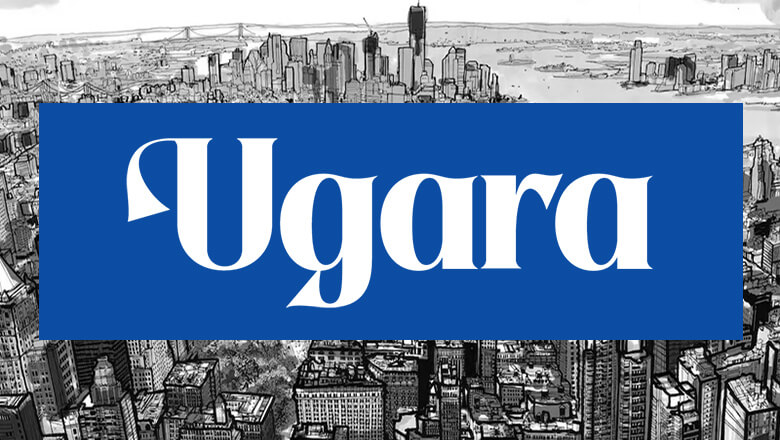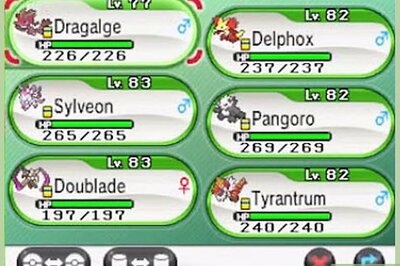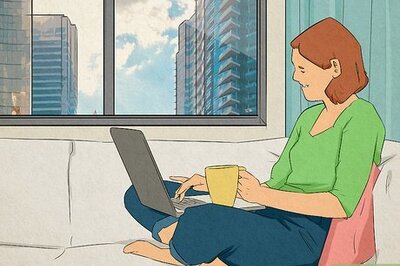
views
This is a phenomenon that's increasingly making its presence felt today. Much of the public now is no longer the babe in the woods. They are smart. They are aware. They know. In short they are media savvy. Its just not the media which plays with them. They too can craftily play with it.
So, much of the public today is no more camera conscious. They are not awed by the brute. And neither by the intruder holding that metallic stub with a trailing wire who invades his private space with a vulgar ease. Today much of the public can playact. They can use the camera to their advantage. They help the reporter create the desired misc en scene. They know a lot about 'background' and 'framing.' They can give you that exact expression you are dying for. They can be hugely gleeful. And can be histrionically tragic. They have mastered the art of presentation. With television reaching every lane and square, they have become knowledgeable. Today they know that what they have is as good a commodity as any other. And it has a market. They know that they are artefacts. Visual objects. And they are ready to be objectified. If media exploits them, they too can exploit the medium to their own advantage. They can get you that 'exclusive element'; sometimes even with a price tag. The hunted has become one with the hunter.
This can be best seen when you report on people who have undergone a tragedy. So you have a father whose daughter was brutally killed. He gives you just the look you want. He sits with a face just teetering on the edge of an outburst. There is just that correct movement of the eyeball when the camera zooms in indecently for a tight shot. He sits poring at his daughter's pictures. He even suggests a few good shots himself. Each a well-crafted shot for a heart-rending story. You visit the mother who is still searching for the remains of her son. She sobs softly dabbing her eyes with her shawl. In between sighs escapes that dramatic bite you have salivating for. Meanwhile some relative innocently enters the frame with equally moist eyes giving you that perfect backdrop. Or the mother whose son was killed because he did what was right. She sits by the window staring out forlornly for you. Or sits on the bed wiping her son's photo giving you that stunning opening shot. You pan the camera at the family whose members have been run over by a car and they all wail in unison never once letting their eyes off the camera. Or that farmer in Barmer who has lost everything to the floods. He will sit down, look up and raise his hands towards the sky for you. Each an aesthetic postcard shot crafted to perfection. Its tragedy being willingly marketed.
I am not for a moment insinuating that all of the above are unreal theatrics. No. Of course not. Not all of them are faking. Definitely not. Indeed there are people who are truly sad having just lost everything. They are genuinely heartbroken. Really crying. Some are too shocked and dazed. In fact, by letting us shoot their intensely private moments, they are doing us a huge favour. We must indeed be thankful to them for allowing us a peep into their sorrow. And also not all fake it on their own. Many times they do what the reporter forces him to do. But out of all there are some who are voluntarily putting up an act. Some who are using the tragedy to create an effect. Giving the reporter what he wants. Expertly stage-managing the whole show. Because they can. Because they have ends in mind. And obviously because the media wants it. Its a wonderfully subtle give and take relationship.
The most obvious reason for doing so is of course to gain public sympathy. Perhaps disillusioned with the social institutions and wanting justice at any cost, they see this as an easy way of getting their pain across. They see media as a tool through which they can get their issues addressed; which anyway is the duty of media. Not that this doesn't create a ripple. Sometimes the end of this mutual exploitation is a joint victory for both. The reporter has got a smashing story. The person's problem has been addressed. And the channel can deservedly shout from the rooftop that they helped a needy get justice. All fine. The only problem is that something is being deliberately given. It is a synthetic emotion. A fabricated sigh. It dilutes the gravity of the situation. Today much of the public has unfortunately understood this. That it has something to offer. Something which a certain voyeuristic section of the superstructure loves to lap up. Something which can be up for sale.
So today it's not just Laloo who sits with a perfect rural construct behind him to create that impeccable media image. When we did a film on tribal deprivation in college, the tribals we visited gave us exactly what we were looking for. They said that after so many reports and films on them, they have learnt what is expected of them. And indeed it all looked so very natural. When we did an investigative project on kidney racket in Chennai, the victim agreed to speak only after we had considerably lightened our pockets. And her tears, expressions and bites fetched us the Best Investigative Project award. So why am I complaining?
first published:December 14, 2006, 22:51 ISTlast updated:December 14, 2006, 22:51 IST
window._taboola = window._taboola || [];_taboola.push({mode: 'thumbnails-mid-article',container: 'taboola-mid-article-thumbnails',placement: 'Mid Article Thumbnails',target_type: 'mix'});
let eventFire = false;
window.addEventListener('scroll', () => {
if (window.taboolaInt && !eventFire) {
setTimeout(() => {
ga('send', 'event', 'Mid Article Thumbnails', 'PV');
ga('set', 'dimension22', "Taboola Yes");
}, 4000);
eventFire = true;
}
});
window._taboola = window._taboola || [];_taboola.push({mode: 'thumbnails-a', container: 'taboola-below-article-thumbnails', placement: 'Below Article Thumbnails', target_type: 'mix' });Latest News
The light flashes......the frame is adjusted......the mike is set, alert and watchful........the camera rolls.....the subject performs as per order......even adds a few inputs of her own......PERFECT SHOT....enough to draw tears from the audience. This is not a film shoot folks. That's the reporter. And that's the mother who has lost her son. Lights off.
This is a phenomenon that's increasingly making its presence felt today. Much of the public now is no longer the babe in the woods. They are smart. They are aware. They know. In short they are media savvy. Its just not the media which plays with them. They too can craftily play with it.
So, much of the public today is no more camera conscious. They are not awed by the brute. And neither by the intruder holding that metallic stub with a trailing wire who invades his private space with a vulgar ease. Today much of the public can playact. They can use the camera to their advantage. They help the reporter create the desired misc en scene. They know a lot about 'background' and 'framing.' They can give you that exact expression you are dying for. They can be hugely gleeful. And can be histrionically tragic. They have mastered the art of presentation. With television reaching every lane and square, they have become knowledgeable. Today they know that what they have is as good a commodity as any other. And it has a market. They know that they are artefacts. Visual objects. And they are ready to be objectified. If media exploits them, they too can exploit the medium to their own advantage. They can get you that 'exclusive element'; sometimes even with a price tag. The hunted has become one with the hunter.
This can be best seen when you report on people who have undergone a tragedy. So you have a father whose daughter was brutally killed. He gives you just the look you want. He sits with a face just teetering on the edge of an outburst. There is just that correct movement of the eyeball when the camera zooms in indecently for a tight shot. He sits poring at his daughter's pictures. He even suggests a few good shots himself. Each a well-crafted shot for a heart-rending story. You visit the mother who is still searching for the remains of her son. She sobs softly dabbing her eyes with her shawl. In between sighs escapes that dramatic bite you have salivating for. Meanwhile some relative innocently enters the frame with equally moist eyes giving you that perfect backdrop. Or the mother whose son was killed because he did what was right. She sits by the window staring out forlornly for you. Or sits on the bed wiping her son's photo giving you that stunning opening shot. You pan the camera at the family whose members have been run over by a car and they all wail in unison never once letting their eyes off the camera. Or that farmer in Barmer who has lost everything to the floods. He will sit down, look up and raise his hands towards the sky for you. Each an aesthetic postcard shot crafted to perfection. Its tragedy being willingly marketed.
I am not for a moment insinuating that all of the above are unreal theatrics. No. Of course not. Not all of them are faking. Definitely not. Indeed there are people who are truly sad having just lost everything. They are genuinely heartbroken. Really crying. Some are too shocked and dazed. In fact, by letting us shoot their intensely private moments, they are doing us a huge favour. We must indeed be thankful to them for allowing us a peep into their sorrow. And also not all fake it on their own. Many times they do what the reporter forces him to do. But out of all there are some who are voluntarily putting up an act. Some who are using the tragedy to create an effect. Giving the reporter what he wants. Expertly stage-managing the whole show. Because they can. Because they have ends in mind. And obviously because the media wants it. Its a wonderfully subtle give and take relationship.
The most obvious reason for doing so is of course to gain public sympathy. Perhaps disillusioned with the social institutions and wanting justice at any cost, they see this as an easy way of getting their pain across. They see media as a tool through which they can get their issues addressed; which anyway is the duty of media. Not that this doesn't create a ripple. Sometimes the end of this mutual exploitation is a joint victory for both. The reporter has got a smashing story. The person's problem has been addressed. And the channel can deservedly shout from the rooftop that they helped a needy get justice. All fine. The only problem is that something is being deliberately given. It is a synthetic emotion. A fabricated sigh. It dilutes the gravity of the situation. Today much of the public has unfortunately understood this. That it has something to offer. Something which a certain voyeuristic section of the superstructure loves to lap up. Something which can be up for sale.
So today it's not just Laloo who sits with a perfect rural construct behind him to create that impeccable media image. When we did a film on tribal deprivation in college, the tribals we visited gave us exactly what we were looking for. They said that after so many reports and films on them, they have learnt what is expected of them. And indeed it all looked so very natural. When we did an investigative project on kidney racket in Chennai, the victim agreed to speak only after we had considerably lightened our pockets. And her tears, expressions and bites fetched us the Best Investigative Project award. So why am I complaining?




















Comments
0 comment